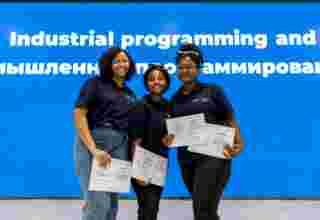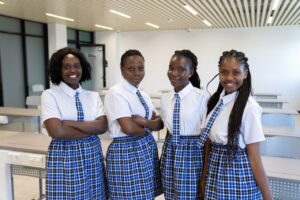
A unique mapping approach that will give smallholder farmers a ‘best fit’ for what to grow, where and how, has been awarded the 2019 Olam Prize for Innovation in Food Security thanks to its potential to improve productivity in food insecure areas and countries.
The approach, called Innovation Mapping for Food Security (IM4FS), is being developed by a team coordinated by Dr Tomaso Ceccarelli of Wageningen Environmental Research, The Netherlands, and Dr Eyasu Elias Fantahun of Addis Ababa University, Ethiopia.
The Olam Prize for Innovation in Food Security was launched in 2014 in partnership with Agropolis Fondation. The winner receives an unrestricted US$75,000 grant for the scaling up of proven research.
Since the inaugural Prize was awarded in 2015, farmers across the world have benefited from the winning innovations, recognised for their potential impact on the availability, affordability, accessibility or adequacy of food.
Essentially, IM4FS is building on the strength of the CASCAPE project, which has been carried out in close cooperation with the Agricultural Growth Programme (AGP) of the Ethiopian government.
CASCAPE designed and implemented site-specific combinations of crops, soils and farming practices, enabling around 200,000 farmers to boost their harvests above the Ethiopian average (yields increasing threefold for wheat and doubling for Tef and Faba bean), and start becoming self-sufficient by applying these best-practice interventions.
Whilst existing land evaluation approaches are focused on improving agricultural productivity, CASCAPE combines data with stakeholder engagement to ensure proposals will work in practice. To ensure this, farmers, extension workers, local experts and planners are engaged from the start, bringing an understanding of the realities on the ground to any approaches.
This data and information is then fed into the GIS3-based tool, which then matches the best farming practices with bio-physical and socio-economic conditions in a given area.
The tool will then create ‘recommendation maps’ that highlight areas most suitable for specific innovations. Local stakeholders will then verify the recommendation against their specialist knowledge and expectations.
IM4FS takes these learnings one step further through its unique ability to offer a scenario planning function that informs decisions in agri-landscapes and food insecure areas.
This ultimately creates a more dynamic and interactive tool to provide simulations and aid stakeholder engagement. Combined, this was central to the judges awarding the US$75,000 prize.
“It is really motivating to work with local researchers and other parties to develop smart solutions to tackle something as devastating as hunger.
The US$75,000 Prize will help fund the roll-out of in-situ data collection by extension workers and other local staff, and develop the mapping tool to include the ‘scenario planning’ function,” said Dr Tomaso Ceccarelli, senior researcher at Wageningan Environmental Research.
The maps, Dr Ceccarelli said, can then be used by government institutions, planners and others to simulate which agricultural interventions and investments should be undertaken where, when and how.
Co-project lead Dr. Eyasu Elias Fantahun, professor at Addis Ababa University, added: “Ethiopia is a perfect example of a country in need of an innovative solution to boost productivity: it is the second largest country in Africa for arable land, but imports half of its food.
It doesn’t have to be that way – there is the potential for self-sufficiency in grains and other staple crops, and the Ethiopian government is supporting this ambition with national policies.
“The funding from Olam will strengthen engagement between our researchers, planners and farmers, accelerating the adoption and implementation of specific agricultural innovations so as to improve food productivity and livelihoods at greater scale.”
Sunny Verghese, Olam Co-founder and Group CEO, said: “As a global food and agri-business, investing in farmers and our own plantations across the world, we are constantly monitoring and assessing the best areas for crops to grow.
But with the rate of weather changes and stark warnings on biodiversity loss, air pollution and soil degradation, there is increasing risk that what is planted today might not be suitable for those fields in the future. IM4FS will help inform about this risk with a better understanding of the interactions between land resources, demography, climate change and farming technology and defining the optimal conditions to boost food production. It will equip farmers, as well as local and regional stakeholders with the information they need to solve food security.”
Marie-Christine Cormier-Salem, Director of Agropolis Fondation and scientific partner to the Olam Prize, said: “Because IM4FS combines the use of IT-based tools like GIS with participatory approaches, you have a tool that is not only visually accurate, but one that stakeholders can relate to. In the end, you have a product that matches knowledge of best practices and adoption drivers with biophysical resources and socio-economic circumstances.”
Source: asempanews.com






